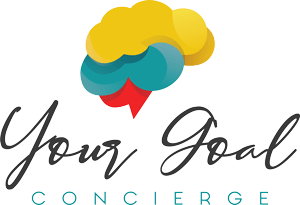5 signs to consider escaping corporate
Erica Kesse
Reasons to escape your corporate life.

- You're not happy with your job. If you're not happy with your job, it's time to start thinking about making a change. You may be feeling unfulfilled, stressed, or just plain bored. Whatever the reason, if you're not happy, it's time to do something about it.
- You're not making enough money. If you're not making enough money to support yourself and your family, it's time to start thinking about making a change. You may need to find a new job that pays better, or you may need to start your own business. Whatever the solution, if you're not making enough money, it's time to take action.
- You're not challenged. If you're not being challenged at work, it's time to start thinking about making a change. You may need to find a new job that offers more opportunities for growth and development, or you may need to start your own business. Whatever the solution, if you're not being challenged, it's time to make a change.
- You're not feeling fulfilled. If you're not feeling fulfilled by your work, it's time to start thinking about making a change. You may need to find a new job that allows you to use your skills and talents in a more meaningful way, or you may need to start your own business. Whatever the solution, if you're not feeling fulfilled, it's time to make a change.
- You're not making a difference. If you're not feeling like you're making a difference in the world, it's time to start thinking about making a change. You may need to find a new job that allows you to work on projects that you're passionate about, or you may need to start your own business. Whatever the solution, if you're not feeling like you're making a difference, it's time to make a change.
If you're feeling any of these signs, it's time to start thinking about making a change. Don't be afraid to take risks and pursue your dreams. The world is your oyster, and you can do anything you set your mind to.

Leadership in the Age of Psychological Safety In today’s corporate world, success isn’t just about strategy. It’s about psychological safety . CEOs are realizing that performance peaks not when people are pushed, but when they feel secure enough to take risks and speak up. But here’s the challenge: how do you build that kind of trust without losing authority ? The answer lies in a powerful yet often misunderstood concept — holding space . What “Holding Space” Really Means for Leaders The term “holding space” comes from therapy, where it means being fully present with someone — without judgment, without trying to fix them, just allowing them to process. In leadership, holding space means creating an environment where employees can bring their ideas, mistakes, and emotions to the table safely. This isn’t about being soft; it’s about being strong enough to stay steady when others can’t. In practice, holding space as a CEO looks like this: Listening without interrupting or rushing to solutions. Asking, “What do you need to move forward?” instead of “Why didn’t you do this?” Allowing others to own their growth and decisions. It’s leadership built on presence, non-judgment, and agency — the three pillars of holding space. Presence: Leadership Beyond Multitasking We live in a world that rewards speed, yet presence requires slowing down. When leaders are distracted — checking emails mid-meeting, glancing at their phones — it signals disinterest and damages trust. But when you are fully present , you send an unmistakable message: “You matter.” Presence is contagious. Teams mirror their leaders. If you lead with calm attention, your organization learns to slow down and focus too — and that’s where creativity and better decisions happen. Non-Judgment: The Language That Builds Safety Many leaders unintentionally erode trust with judgmental language. Questions like “Why did you do that?” or “Who’s responsible for this?” trigger defensiveness. Instead, try curiosity-driven language: “How did you get to that conclusion?” “What’s the context behind this choice?” This small shift reframes conversations from blame to collaboration. Non-judgment doesn’t mean ignoring mistakes — it means addressing them with respect and clarity. Agency: Giving Teams Control Builds Loyalty Micromanagement is often fear disguised as leadership. But in healthy organizations, agency is empowerment . Let people choose how to solve problems, when possible. Set clear outcomes, then step back. Agency turns employees into owners — and owners care more deeply about results. As a CEO, showing trust in your team’s judgment builds the very loyalty and performance most leaders chase through control. Creating a Safe Culture Without Losing Authority Many executives fear that leading with empathy might make them appear weak. The truth is the opposite. When a leader can hold firm boundaries and offer empathy simultaneously, it creates stability and respect. Authority isn’t about domination — it’s about steadiness. Practical ways to build safe yet structured cultures: Clarify expectations early. Safety comes from knowing the rules of engagement. Celebrate learning, not just outcomes. Reward curiosity and reflection. Model accountability. Admit your own mistakes; it sets the tone for honesty. You don’t lose authority when you hold space — you earn deeper trust . The Business ROI of Psychological Safety Google’s Project Aristotle found that psychological safety was the number-one predictor of high-performing teams. When people feel safe, they innovate more, collaborate better, and stay longer. For CEOs, this means: Lower turnover More creative problem-solving Stronger alignment between purpose and performance A safe culture doesn’t weaken business — it strengthens the system from within. Holding space might sound therapeutic, but it’s one of the most strategic leadership tools of our time. When you blend empathy with boundaries, you build an organization that performs because it feels safe to be human. That’s how the best CEOs lead in 2025 — not just with vision, but with emotional intelligence, clarity, and care .

The Shift Every CEO Needs to Make For decades, leadership was defined by performance — numbers, market share, and speed. But in 2025, the most effective CEOs are no longer the loudest voices in the boardroom; they’re the ones who know how to pause. They’ve learned that mental health isn’t a personal issue; it’s a leadership strategy. The modern leader’s competitive advantage is no longer just intelligence or vision, but emotional steadiness. The Hidden Cost of “Always On” Leadership The traditional model of success rewards constant motion — long hours, instant decisions, and endless availability. But neuroscience shows that this style of leadership pushes the brain into what psychologists call “System 1 thinking” — reactive, fast, and emotionally charged. In the short term, it feels productive. In the long run, it leads to burnout, poor decision-making, and a toxic work culture that drains innovation. When CEOs don’t protect their mental health, it doesn’t just affect them personally — it ripples through the entire organization. Stress at the top multiplies downward. Emotional regulation and psychological safety start with the leader. Why Mental Health Is a Leadership Skill Mental health has become a core leadership competency — not a perk or an afterthought. Leaders who prioritize emotional stability lead teams that are calmer, more creative, and more loyal. Why? Because they model regulation instead of reactivity. Here’s what that looks like in action: Presence over panic. Instead of reacting to every crisis, emotionally intelligent CEOs know how to pause, assess, and respond with clarity. Non-judgment over blame. They create psychological safety by replacing “Why did this happen?” with “What can we learn from this?” Agency over control. They empower teams to take ownership, giving them space to think and grow instead of micromanaging. These traits are what therapists call “holding space.” In leadership, that means creating an environment where people feel safe to think, fail, and grow without fear. Holding Space: A CEO’s Superpower Holding space is more than a feel-good phrase. It’s a practice rooted in psychotherapy — the art of being fully present, calm, and non-judgmental, even in discomfort. Applied to business, it becomes a strategic leadership tool . When leaders learn to hold space — for themselves, their team, and the organization — they make better, more sustainable decisions. Here’s how: They stay grounded under pressure. This steadiness prevents emotional contagion, where team stress mirrors the CEO’s stress. They create trust. Teams perform better when they know their leader listens before reacting. They think systemically. By slowing down, leaders can identify patterns in culture and performance — not just symptoms. In short: mental health awareness translates into sharper strategic leadership. From Burnout to Boundaries The first step toward mentally healthy leadership isn’t more meditation apps — it’s boundaries. Boundaries are not walls; they’re structures that protect energy and focus. For CEOs, that can mean: Scheduling “no-meeting” time for deep thinking Logging off email after a certain hour Saying no to projects that don’t align with vision Healthy boundaries are acts of leadership , not weakness. They communicate to your team that rest, clarity, and focus are valued. Creating a Mentally Healthy Organization Leaders set the tone for how the entire organization treats well-being. If you talk about self-care but answer Slack messages at midnight, your team learns that rest isn’t really respected. Here’s what builds a culture of mental wellness that also fuels performance: Normalize reflection. Start team meetings with “What worked this week?” instead of “What went wrong?” Encourage honest dialogue. Invite feedback on how processes or workloads affect stress levels. Train managers in emotional intelligence. EQ can be developed — and it pays off in retention and innovation. When CEOs model calmness and care, they create psychologically safe organizations — and that’s what keeps good people.

CEOs shape organizational resilience through leadership and boundary-setting. By prioritizing mental health, they create cultures that drive retention, productivity, and innovation. This post explores how CEO boundaries lead to tangible business outcomes, supported by data and actionable strategies. The Business Case for Boundaries A 2023 Gallup study found that organizations with high employee engagement—fueled by healthy workplace cultures—see 23% higher profitability and 66% lower turnover. CEOs who set boundaries foster environments where mental health thrives, directly impacting these metrics. Conversely, poor leadership boundaries lead to disengagement, costing companies an average of $450 billion annually in the U.S. alone (Gallup, 2024). How Boundaries Drive Business Success 1. Improved Retention: Clear boundaries, like flexible work policies, reduce employee burnout. Adobe’s 2022 boundary-focused policies cut turnover by 10%. 2. Enhanced Productivity: Teams with mentally healthy leaders are 20% more productive, per a 2023 McKinsey study. 3. Increased Innovation: Psychologically safe environments, fostered by boundary-setting, boost creativity. Google’s 2015 Project Aristotle linked safety to 30% more innovative output. Actionable Steps for CEOs 1. Implement Flexible Policies: Allow hybrid work or no-meeting days to support team mental health. 2. Invest in Resources: Offer mental health programs, like EAPs, to show commitment to well-being. 3. Model Boundaries: Publicly prioritize your own mental health to inspire your team. 4. Measure Impact: Track retention and engagement metrics to quantify the business benefits. CEO leadership in boundary-setting builds resilient organizations by prioritizing mental health. The result? Lower turnover, higher productivity, and a culture of innovation. Start by implementing one boundary-focused policy this month and measure its impact.
